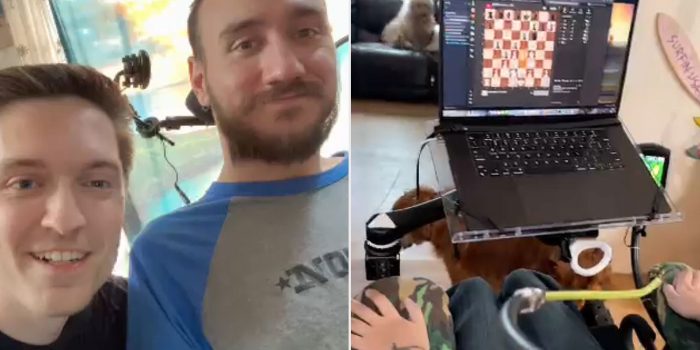Elon Musk’s anticipated Neuralink chip has been implanted in a 29-year-old patient. This is the big news, which Musk himself shared via his social media handle on X. The individual who received the chip had a near-fatal accident about eight years ago. The patient, Noland Arbaugh, was also with Musk during the announcement stream. He said that the chip was not perfect, but its effects were already visible, and he could play video games for hours on end without having to rely on his family members.
“It’s not perfect. I would say we have run into some issues. I don’t want people to think this is the end of the journey. There’s a lot of work to be done, but it has already changed my life,” Arbaugh said, speaking next to Bliss Chapman, an engineer at Neuralink.
The ultimate aim of Neuralink at its launch in 2016 was that people should be able to control their minds with the help of their brains. Initially, tests were conducted on monkeys, after which, in January 2024, Musk announced that his chip was ready for a human implant.

However, everything about the chip was not as rosy or smooth as it seemed. The Physicians Committee for Responsible Medicine (PCRM), a medical ethics group, accused the company of putting the monkeys through “extreme suffering as a result of inadequate animal care and the highly invasive experimental head implants during the experiments.” Neuralink denied wrongdoing with the monkeys and remained steadfast in their claim that all was ethically done.
With all said and done, some of the major takeaways from the neural project recently are as follows,
- The FDA found quality control issues at one of the Neuralink animal sites right after Musk claimed that human implants were safe.
- Elon claims that individuals with the neuralink implant can control a mouse with their thoughts.
- PCRM alleged in a letter to the SEC that “Musk knows that to be false.” The SEC has not yet disclosed whether it will investigate Neuralink.
Despite all these allegations and hurdles, Neuralink has moved on to human trials.

Musk’s livestream shared on X showed the patient controlling a game of chess via his thoughts while his hands rested on the chair. “I love playing chess, and so this is one of the things that you’ll have enabled me to do—something that I wasn’t able to do much the last few years, especially not like this,” he said. “I had to use a mouse stick and stuff, but now it’s all being done with my brain.”
Arbaugh said that “he had dislocated parts of his spinal cord in a freak diving accident about eight years ago that left him paralyzed from below the shoulders.”
Apart from being unable to play chess, Arbaugh was also unable to play his favorite video game, as he had to get assistance from his family to readjust his seating position every few hours.
“I had given up on playing that game,” he said, adding that it’s a “big game” that requires a lot of time sitting still. “I have to worry about many things—getting pressure sores and things like that—so I couldn’t play it as much as I wanted to.”
After the implant, Arbaugh has been able to play for longer periods of time. However, he also revealed that he had to charge the implant after a few hours of usage.
“So play for eight hours, have to get off and let it charge for a while, and then hopefully be able to play some more,” he said.
Arbaugh said that controlling Neuralink soon became “intuitive” and that to move the computer cursor, for example, he only needed to imagine the cursor moving.
“It was like using the force on a cursor,” he said.


